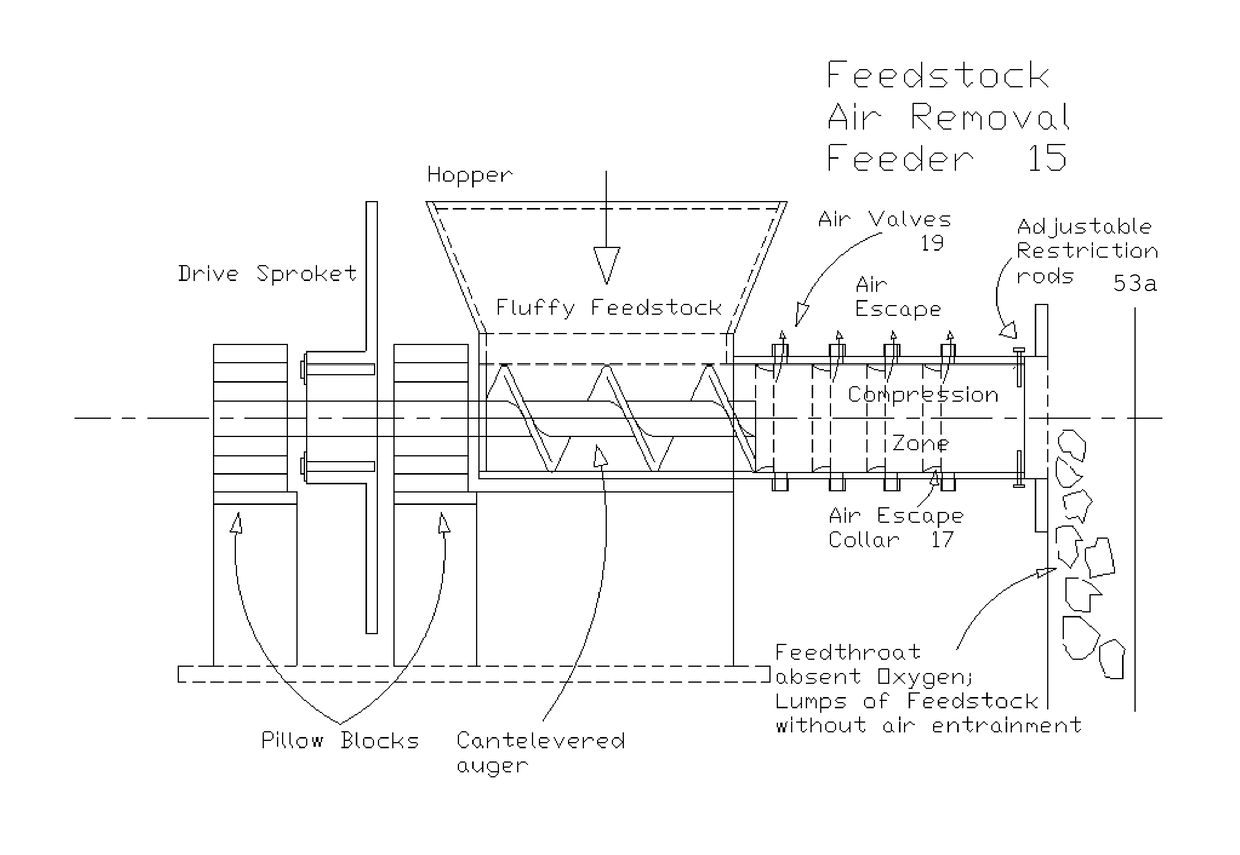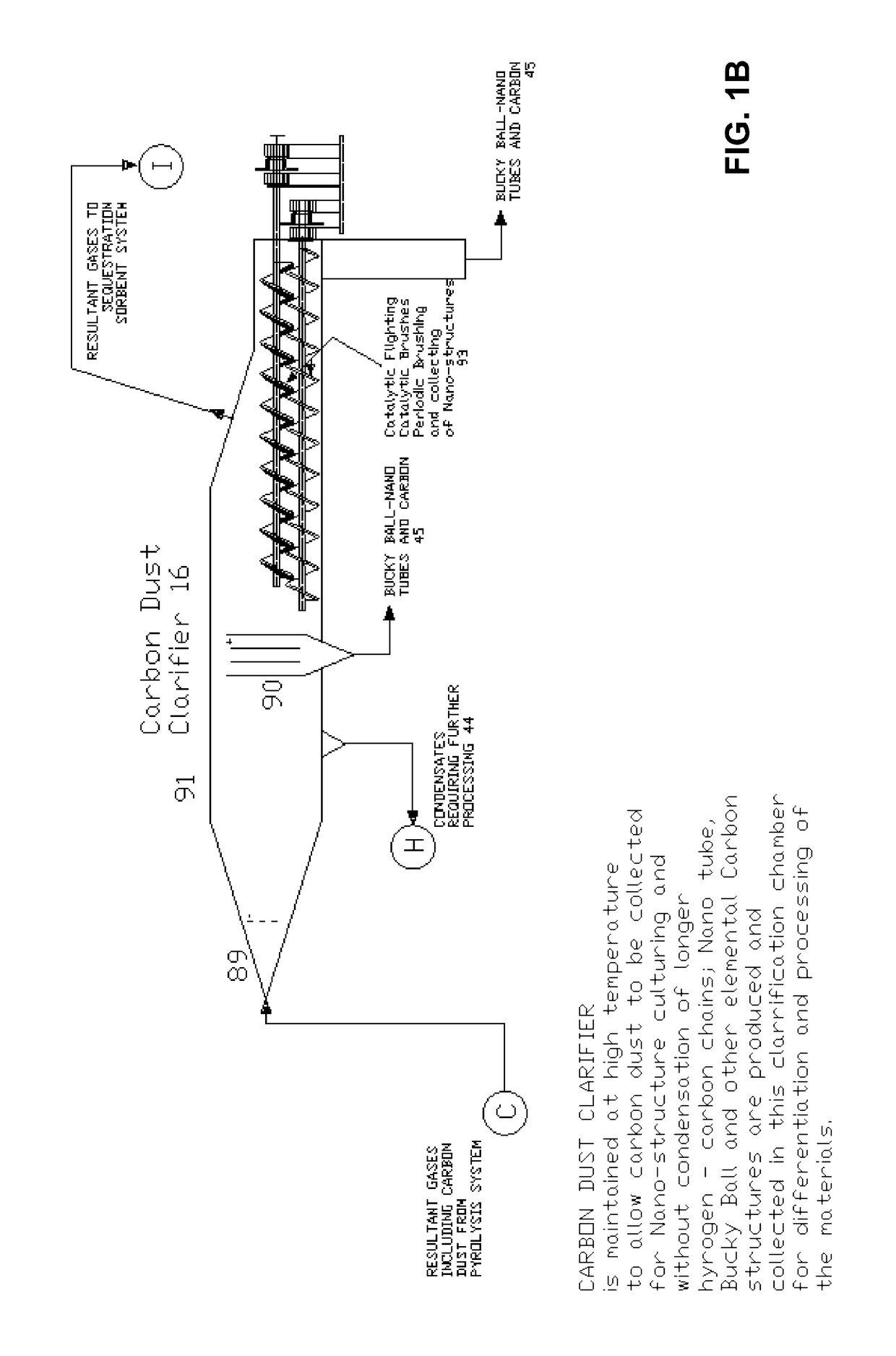Pyrolysis and gasification systems, methods, and resultants derived therefrom
a gasification system and pyrolysis technology, applied in the field of pyrolysis systems and methods for producing gas products, can solve the problems of limiting the range of feedstocks that specific prior art pyrolysis systems may process, limiting the application range of specific prior art pyrolysis systems, and long-standing problems of obtaining consistency in pyrolysis products, etc., to achieve easy conformation, enhance the btu energy density of resultant gas, and enhance overall system efficiency
- Summary
- Abstract
- Description
- Claims
- Application Information
AI Technical Summary
Benefits of technology
Problems solved by technology
Method used
Image
Examples
Embodiment Construction
[0051]FIGS. 1A-1F are schematic diagrams showing components of a combined cycle carbonaceous feedstock conversion system 10 according to an exemplary embodiment of the present invention. The system 10 includes a high-temperature pyrolysis unit 12 that receives carbonaceous feedstock through an air restrictive airlock feeder 14 and / or an air removal feeder 15 with a sequestration agent injector 25 optionally providing a sequestration agent for the controlled internal sequestration of noxious elements and compounds that produce a substantially Mercury and Sulfur-free gas product containing methane and a solid product containing Carbon, activated Carbon, and Carbon Nano-Tubes, depending upon the type of feedstock and whether “non-wetting” agent injector 27 is used to induce non-wetting action. Exemplary sequestration agents include materials containing Halogen elements and exemplary non-wetting agents include materials containing silica. The system 10 includes further injectors of visc...
PUM
| Property | Measurement | Unit |
|---|---|---|
| temperatures | aaaaa | aaaaa |
| temperatures | aaaaa | aaaaa |
| temperatures | aaaaa | aaaaa |
Abstract
Description
Claims
Application Information
 Login to View More
Login to View More - R&D
- Intellectual Property
- Life Sciences
- Materials
- Tech Scout
- Unparalleled Data Quality
- Higher Quality Content
- 60% Fewer Hallucinations
Browse by: Latest US Patents, China's latest patents, Technical Efficacy Thesaurus, Application Domain, Technology Topic, Popular Technical Reports.
© 2025 PatSnap. All rights reserved.Legal|Privacy policy|Modern Slavery Act Transparency Statement|Sitemap|About US| Contact US: help@patsnap.com



